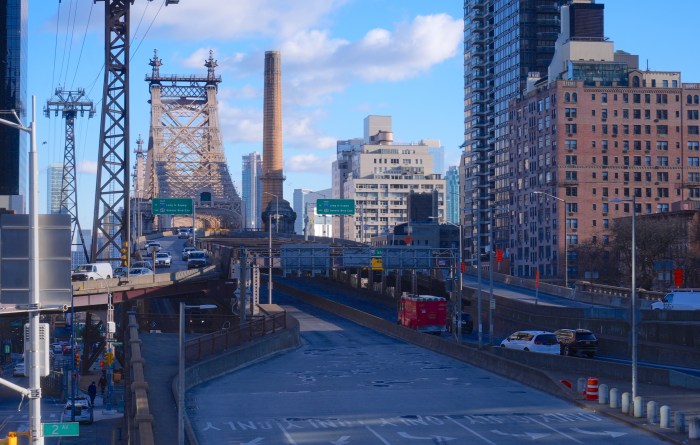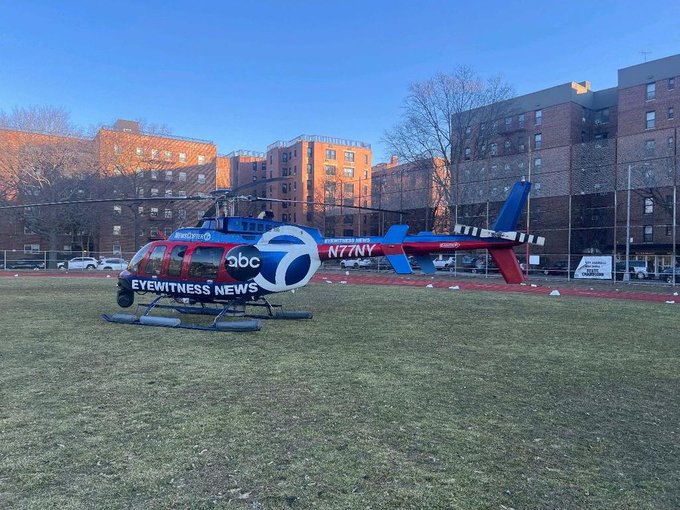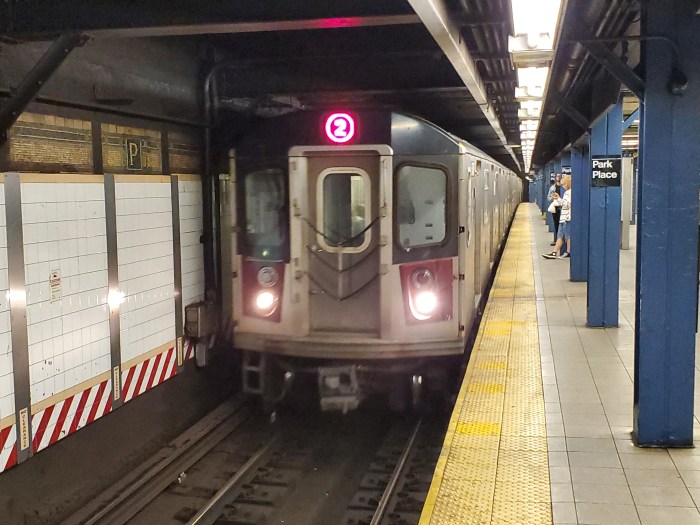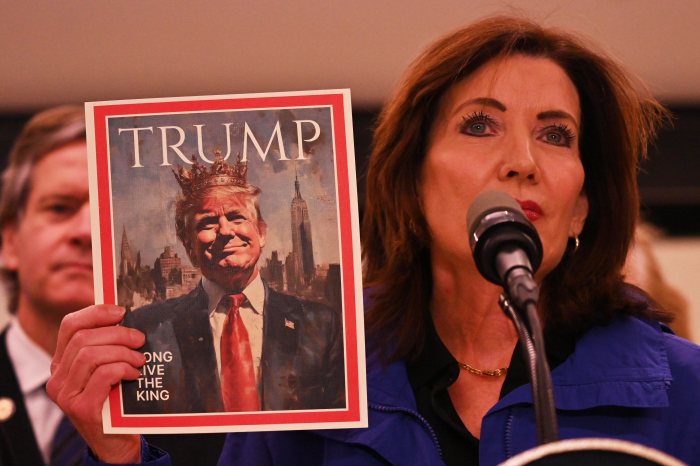
David Letterman called it a “petting zoo.” Donald Trump deemed it “awful.”
Now, 10 years since cars were first banned from sections of Times Square, most consider the experiment an unmitigated success. And on Tuesday, Bloomberg-era officials joined the de Blasio administration and politicians at the “Crossroads of the World” to celebrate the 10-year anniversary of the pedestrianizing of the space.
“Times Square showed that streets that work better for people aren’t just amenities — they’re an investment in the quality and livability of the city; they’re an investment in its people,” said Janette Sadik-Khan, the city’s then transportation commissioner, who noted her and the former mayor were considered crazy at the time to push the concept.
A decade later, some experts and advocates are left searching for that vision from the de Blasio administration — an administration that has installed dozens of plazas while also temporarily reclaiming space from cars each summer. De Blasio’s administration has failed to deliver similar transformations to other pedestrian-packed spaces in the city.

“I think the de Blasio administration has not nearly been aggressive (enough) in pushing the envelope in terms of change,” said Eric McClure, an activist and executive director of StreetsPAC, an action committee backing elected officials who support improving the safety and livability of New York City streets. “So hopefully that’s something they’ll take on in the last years of his administration.”
It’s not for lack of ideas. Fairly-detailed proposals have been put forward to restrict vehicle access to other areas brimming with foot traffic, such as the Financial District and Broadway between Times and Herald squares.
Nicole Gelinas, a senior fellow at the Manhattan Institute, felt Rockefeller Center and the area around Trump Tower are ripe for improved pedestrian access, but that Mayor de Blasio does not seem in step with those needs.
“I think [DOT Commissioner Polly] Trottenberg and DOT have done well … but in terms of the mayor’s interest in streetscapes, it just seems like there’s very little interest. I mean, he’s in his car. It doesn’t seem like he’s thinking of these core parts of Manhattan as important places where people are working, people are living, people are coming to visit.”
The city typically faces significant backlash from concerned drivers and businesses over parking and patronage — two issues the Times Square Alliance said were a nonissue for an area well-served by transit. Ten years later, more than 460,000 pedestrians visit the space while retail rents have tripled, according to the alliance.

Still the pushback can handcuff the DOT, according to Gelinas.
“It’s a political capital issue — how far can the DOT really go if the mayor’s not going to stick up for them?” Gelinas said. “Bloomberg took a lot of criticism.”
De Blasio has grappled with Times Square, at one point raising the prospect of removing the pedestrian space as a way to address unruly costumed characters as well as topless women in body paint, which he found offensive.
The mayor in April did announce that the city would study a car-free space for lower Manhattan this summer, but on Tuesday he said the city had to take a measured approach to accommodate car traffic.
“It’s something that I think can be very valuable, but also has to be balanced against the growing congestion,” de Blasio.
The city currently oversees the maintenance or planning of 79 plazas across the five boroughs, according to a DOT spokesperson. The department touted a variety of projects around the city that should add pedestrian space to overcrowded blocks — especially along Broadway.
“Times Square and its sibling plazas along Broadway from Union Square to Columbus circle fundamentally changed the way pedestrians, cyclists, and vehicles use the street, enhancing safety and quality of life for all,” the spokesperson said in a statement. “DOT continues to use treatments on Broadway to rebalance the street for its majority users — pedestrians and cyclists”
Other cities, such as Oslo, Norway and Madrid, are moving to create larger car-free zones. Brooklyn Councilman Brad Lander described the Avenue C Plaza in his district as a venue for people to meet, cultivate relationships and understand each other.
“Kensington is a neighborhood that’s largely Bangladeshi; that’s got a Latino community; that’s got old-timers and yuppies — everybody,” said Lander. “And we go out and … we do a community Iftar that brings in several hundred people; and we paint pottery and learn each other’s culture.”
“[It] not only helps us understand how we take back our streets,” he added, “but how we build a more inclusive city.”
Correction: An earlier version of this story should have noted the Avenue C Plaza is permanent.
Read more: MTA Reviews Concealed Carry Rules After Court Ruling




































